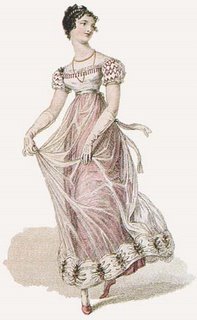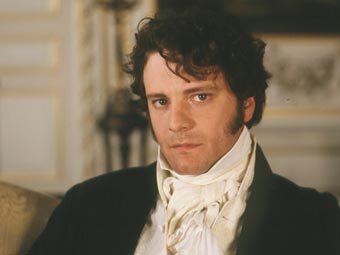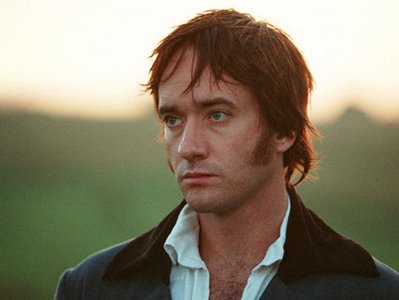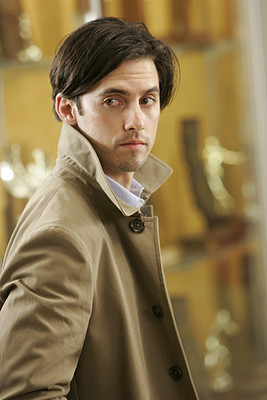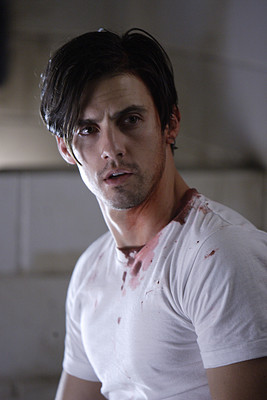 Hilarious Romantic TimesSophisticated, sexy, surprising J R WardEnthusiastic…intriguing and addicting Publishers Weekly
Hilarious Romantic TimesSophisticated, sexy, surprising J R WardEnthusiastic…intriguing and addicting Publishers Weekly Meet Colleen Gleason whose first book, already with some great reviews and a lot of online buzz, comes out this week. From today’s (relevant) comments and questions, one winner will receive a copy of The Rest Falls Away, so come join in the fun!
Meet Colleen Gleason whose first book, already with some great reviews and a lot of online buzz, comes out this week. From today’s (relevant) comments and questions, one winner will receive a copy of The Rest Falls Away, so come join in the fun!
Colleen, congratulations and welcome to the Riskies. Tell us about your book.
The Rest Falls Away is the first in a series about Victoria Gardella Grantworth, a young lady who lives in Regency-era London. She’s just about to make her debut into Society when she learns that she comes from a family of vampire hunters, and that she’s been chosen to take up the task.
 Victoria has to learn how to fight (all those body appendages she isn’t supposed to know about actually come in handy!), she has to figure out how to sneak out of the house at night to stalk vampires, and, most pressing of all…she has to figure out where on earth she can hide her stake. Her reticule just isn’t big enough, and she certainly can’t go to Almack’s with a stake in hand.
Victoria has to learn how to fight (all those body appendages she isn’t supposed to know about actually come in handy!), she has to figure out how to sneak out of the house at night to stalk vampires, and, most pressing of all…she has to figure out where on earth she can hide her stake. Her reticule just isn’t big enough, and she certainly can’t go to Almack’s with a stake in hand.
Oh, and she has to catch a husband. Of course.
Victoria’s mother doesn’t know her daughter is a vampire hunter, and nor does the rest of Society know that the vampire queen Lilith has come back to London, minions in tow, in search of a book of enchantments.
I’d like to let your readers who don’t generally like paranormals in on a little secret: I don’t read vampire novels, nor do I particularly like paranormals. Therefore, my book isn’t a gory, horror novel. There aren’t any brooding vampires who turn out to be the heroes. The story is mostly about Victoria, a woman who has the chance to be something more than just another Regency miss. A woman who has choices to make, a duty to respond to, and a freedom that other women of that time would not only have dreamed of–but might even have been frightened of. She’s a superheroine trying to live a balanced life in a time where Society women aren’t supposed to do much other than wed, bed, and breed.
One more thing: since this is the first book in a series, a true series, about Victoria Gardella Grantworth, there isn’t a traditional happily ever after ending. Yet.
Where did the idea for the Gardellas come from? And why did you choose the Regency period for the setting?
I became addicted to Buffy the Vampire Slayer a few years ago. I loved the dual sides of her life, I loved the unexpected–that she didn’t look or act like a superhero, yet she had all of these extra powers and a duty that she had to bear.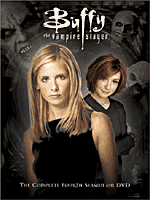 In Buffy, we’re told that “once in every generation” a woman is chosen to be The Slayer, and that got me to thinking about Buffy’s predecessors. What had it been like for them–as it was so difficult for her, here in the 20th century? And then of course, I know that the Regency is a very popular time period for books, so I merged the two together and voila! The idea was born.
In Buffy, we’re told that “once in every generation” a woman is chosen to be The Slayer, and that got me to thinking about Buffy’s predecessors. What had it been like for them–as it was so difficult for her, here in the 20th century? And then of course, I know that the Regency is a very popular time period for books, so I merged the two together and voila! The idea was born.
But I didn’t feel that I could fully tell Victoria’s story in one book, so I decided to make it a series. And while in Buffy, she’s the only Slayer, that’s not the case in my series. The mythology and the alternate world is quite different than that of Buffy; so anyone who’s expecting a sort of fan fiction would be disappointed.
What research did you have to do for the books?
I watched a lot of Buffy! (Just kidding. Seriously, I’ve only watched the first three and a half seasons.)
I actually did a lot of research about vampire mythology, because, as I mentioned, I don’t really read vampire books. I was trying to find a mythology that worked for me, but at the same time, I wanted it to be comfortable to a non-paranormal reader. We all know vampires die from a stake to the heart, that they can’t go out in sunshine, that they’re frightened of silver, etc. So I didn’t mess with that part of the legend.
And of course, some of that legend comes from the Regency’s own Byron and Polidori (who, by the way, both make appearances in the second Gardella book Rises the Night.)
I also of course had to make sure I researched the Regency period. I did that by reading a lot of Risky Regency author books :-), along with Jane Austen, and using other non-fiction resources. Oh, and I think I might have watched the BBC’s Pride & Prejudice a few times. Purely for research purposes, of course.
What are the challenges of writing a series about the same set of characters and how do you keep track of all the details?
The biggest challenge is making sure I think ahead about the series, so that I don’t write something that boxes me into a corner for future books. So far, that hasn’t happened, but I’ve had to catch myself a few times from falling into that trap. I keep a binder notebook–a three-incher–with all of my notes and research and character stuff tabbed in the notebook. I keep actual text from the manuscripts in there, from each book, especially in regards to character description and even dialogue. That’s the only way I can keep myself organized! I probably need charts and family trees, but I’m not there yet.
One thing I love about writing a series with the same characters in it is the fact that I have multiple books in which I can spread and develop their story. I’m in no hurry to tell their tales, resolve their happy endings, etc. While the main plot of the book is resolved each time by The End, the character development and arcs are not. They simply can’t be, for they’re too complex.
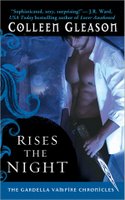 What’s coming up next for you?
What’s coming up next for you?
I’m currently writing the third Gardella book, which is due to be released in early 2008. Rises the Night, the second Gardella, will be out in June.
And the Risky question: Is there anything you would have liked to include in The Rest Falls Away that you left out because you or your editor felt it was too risky?
Not in this book. I was a little worried about the ending because it’s not a traditional HEA, but my editor loved it, so I wouldn’t consider that a risky proposition. However, ask me the same question about Rises the Night, and I’ll have a different answer!
Thanks so much, Riskies, for having me! I feel very lucky to be included with such a great, talented group of ladies, several of whom I know personally.


